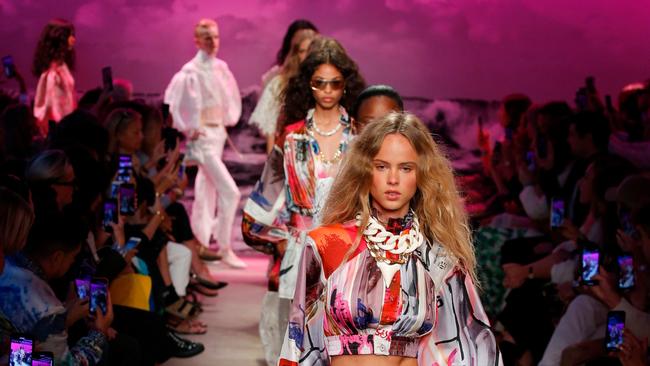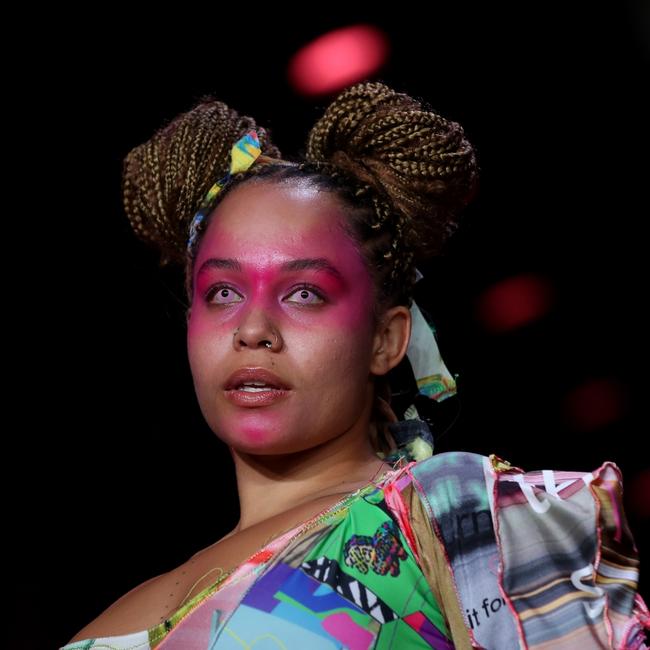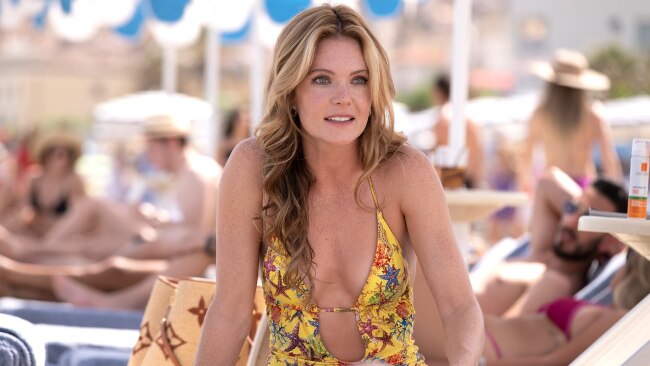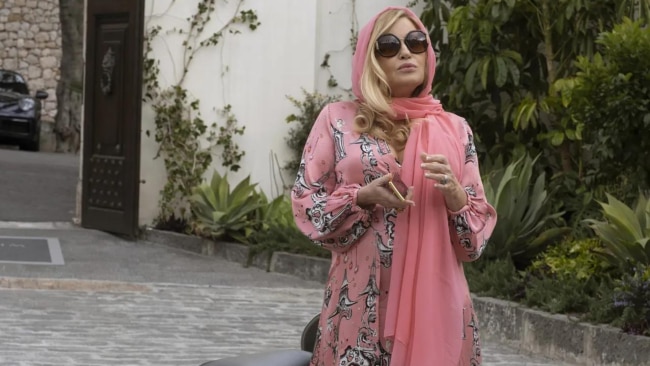Platitudes are the new black at Fashion Week
If you want to make the local fashion industry successful, legitimately democratise and embrace diversity without making it a “thing”.

If you want to make the local fashion industry successful, legitimately democratise and embrace diversity without making it a “thing”.
This is an opinion article.
The definition of insanity is doing the same thing over and over again and expecting a different result.
Fashion is no exception to this rule. One of the most infuriating examples of this bubbled to the surface after the Australian Fashion Week 2022 line-up was released.
Kicking off on Monday, this will be the first time the shows will be back to capacity since the rolling lockdowns of 2021 when social scenes were minimised like tabs and creative industries were crippled by Covid.
Expect to see a return of epic, large scale physical runway shows, famous people perched front row and peacocks parading around outside Carriageworks in Sydney looking bored/candid. All the sideshow stuff adds to the colour and fun of fashion and what it inspires. However it’s the official side of things seen ahead of this year's fashion week which is more aggravating than synthetic fibres.
Australian Fashion Week is included on the international collections circuit - meaning buyers and media from around the world head Down Under to snap up stock.
Why, for the love of eating Woolworths Mud Cake in activewear on the couch, are we still having special “Curve Edits”.
Just. Include. Everyone. Everybody. Every body and every “shape” in everything.
Have the organisers not logged on to TikTok or Instagram in the past year and noticed the overwhelming shift to body neutrality and the intolerance for intolerance?
It’s ironic considering Afterpay - one of the most successful tech companies going - is now bankrolling our premier fashion event in a bid to drum up both wholesale and retail activity. But the scope has stayed as small as a size 0 instead of expanding to bring in more commercial options.
The days of fashion only being a domain for the lithe, luxurious and loaded is done. And the tokenism, the performative platitudes made to average bodies and minorities in the fashion space, like Indigenous designers, models, creators and fit models, is patronising when we should be doing all we can to encourage more patronage.
By all means stage an epic Welcome to Country ceremony to kick off the week and a standalone First Nations showcase, but then start folding in all of this, plus the other different elements of contemporary - and realistic - Australian culture, into every runway.
Treat fashion week like a pavlova. Fold everything in to create something whimsical, moreish and delicious.
During last year’s showcase, Aussie model Basjia Almaan raised the issue of how far the event still has to go when it comes to realising real inclusivity.

“You have to be treating people like they are equal, not like they are a commodity or props, and this starts with bringing people into the decision-making process who understand the experience of the models they are using,” Ms Almaan told The Australian.
“If you don’t have Indigenous people in the room, if you don’t have queer people of colour, if you don’t have black people, if you don’t have disabled people, how are you going to know how to make these spaces safe and comfortable for them?”
The same criticism swelled again when the international shows resumed post Covid this year. In Valentino’s haute couture show in January, designer Pierpaolo Piccioli sent women with a variety of curves down the runway. However only two of the 81 models who walked the runway strayed from sample sizes, meaning they had measurements smaller than an Australian size 8.
Two out of 81 was good odds compared with other shows in Paris, with Saint Laurent, Miu Miu and Stella McCartney failing to cast plus-size or even average size models.
Balenciaga and Giorgio Armani committed to tributes to the war in Ukraine but left plus-size talent out of the picture.
It’s not just high-end fashion, experts are now worried if this lack of visibility continues, we will not only see a return of Y2K sartorial trends but they damaging diet culture that accompanied the era of the figure-hugging Juicy Couture trackies and low-rider jeans that framed your mons pubis.
Indie and grunge nostalgia is returning via algorithms online. It was a time when Kate Moss, Sienna Miller and the older Delevingne sisters, as well as other thin, rich, white women, ran amok in denim cut-offs and gumboots at music festivals. Creator of Nobs, a “no bullshit, anti-diet fitness” app, Lucy Mountain had a refreshing epiphany.
“If you're seeing this trend all over your timelines and TikTok feeds, please remember these bodies wearing the fits are not meant to be trends too,” Ms Mountain said. “Bodies are not trends.”
It’s been a wave of momentum building for years and the shift could well and truly be on.
Look at Rihanna. Her high-end, fancy fashion line was shuttered but her beauty and lingerie collection, Savage X Fenty, are runway and runaway success stories due to the focus on inclusivity. The latter is now valued about $4bn.
Another emerging fashion mogul who may have cracked the code is Kim Kardashian. The same woman who shook up body ideals is now transforming the fashion industry, from the inside out, one pair of flesh-coloured knickers at a time.
Before she was shredding like a jockey to fit into Marilyn Monroe's dress for the Met Gala, in the latest Skims campaign she cast former Victoria Secret models - Angels, no less - to star in the new campaign for her underwear line.
These women, including supermodels Tyra Banks and Heidi Klum, are not confirmed celestial beings but are as close to God-like perfection we thought we’d ever see back in the Noughties. Or so we thought in the days of the annual VS parades, before we knew how problematic and f…ked up our outlook on physical beauty really was.
Even these models, promoted as body unicorns, were also cast aside and sacked when they reached a certain age. Klum retired her VS "wings" when she was 37, despite rushing back from maternity leave on several occasions throughout her 13-year tenure with the brand. Kardashian’s latest ads are a big flip of the bird not only to the Victoria’s Secret affect but the wider fashion industry for the binary ways in which it continues to view and commodify bodies.
She cast these former “Angels” like Alessandra Ambrosio, Candice Swanepoel, Ms Banks and Ms Klum for the “Icons” campaign for a line of “Fits Everybody” undies that come in nine sizes and, according to Kardashian, “stretches to twice its size without ever losing shape”.
Women's Wear Daily reported the new campaign builds on what Skims has been doing all along, which is feature a mix of people instead of only those that fit a certain mould.
“Skims, which was founded by Kardashian and Los Angeles-based entrepreneur Jens Grede in 2019, has a history of working with a mix of high-profile models, as well as regular people, including Kate Moss; Megan Fox; sister Kourtney Kardashian; Bruce Willis and Demi Moore’s daughter and actress Rumer Willis, and former inmate Alice Marie Johnson,” WWD stated.
Kardashian, as a business owner, understands the power of adaptation and evolution, something Aussie Fashion Week could take heed of.
If you want to make the local fashion industry successful, then do away with “edits” and the word “curve” and legitimately democratise and embrace diversity without making it a “thing”, or prepare for the cultural circus to move on without you sooner than you think.
It’s a truth universally acknowledged that you buy the outfit, not the body, but you can’t be what you can’t see.
Prove us wrong.


